实验3:OpenFlow协议分析实践
实验报告
(一)基本要求
1. 导入到/home/用户名/学号/lab3/目录下的拓扑文件


2. Wireshark抓包结果
-
OFPT_HELLO 控制器6633端口(我最高能支持OpenFlow 1.0) ---> 交换机38928端口
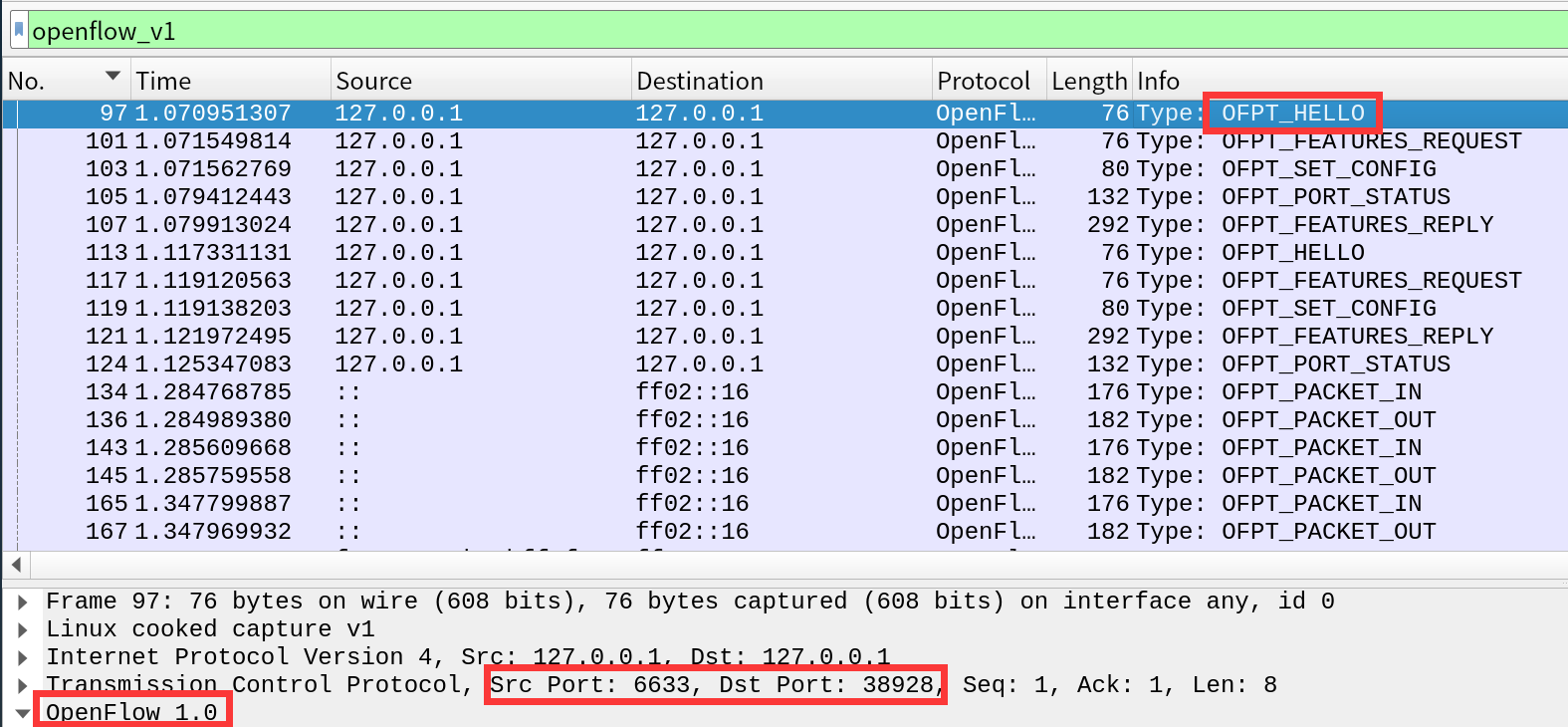
-
交换机38928端口(我最高能支持OpenFlow 1.5) ---> 控制器6633端口
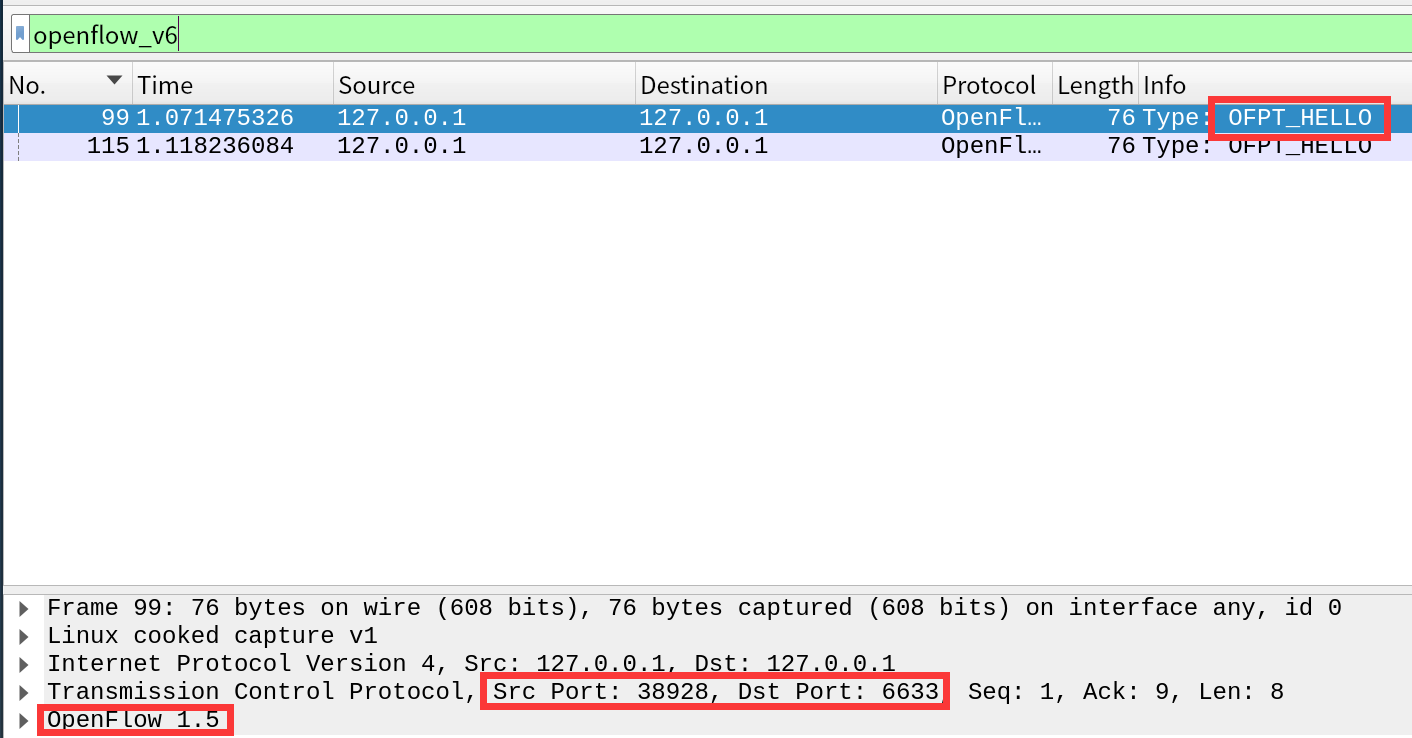
控制器与交换机建立连接,并使用OpenFlow 1.0
-
OFPT_FEATURES_REQUEST 控制器6633端口(我需要你的特征信息) ---> 交换机38928端口
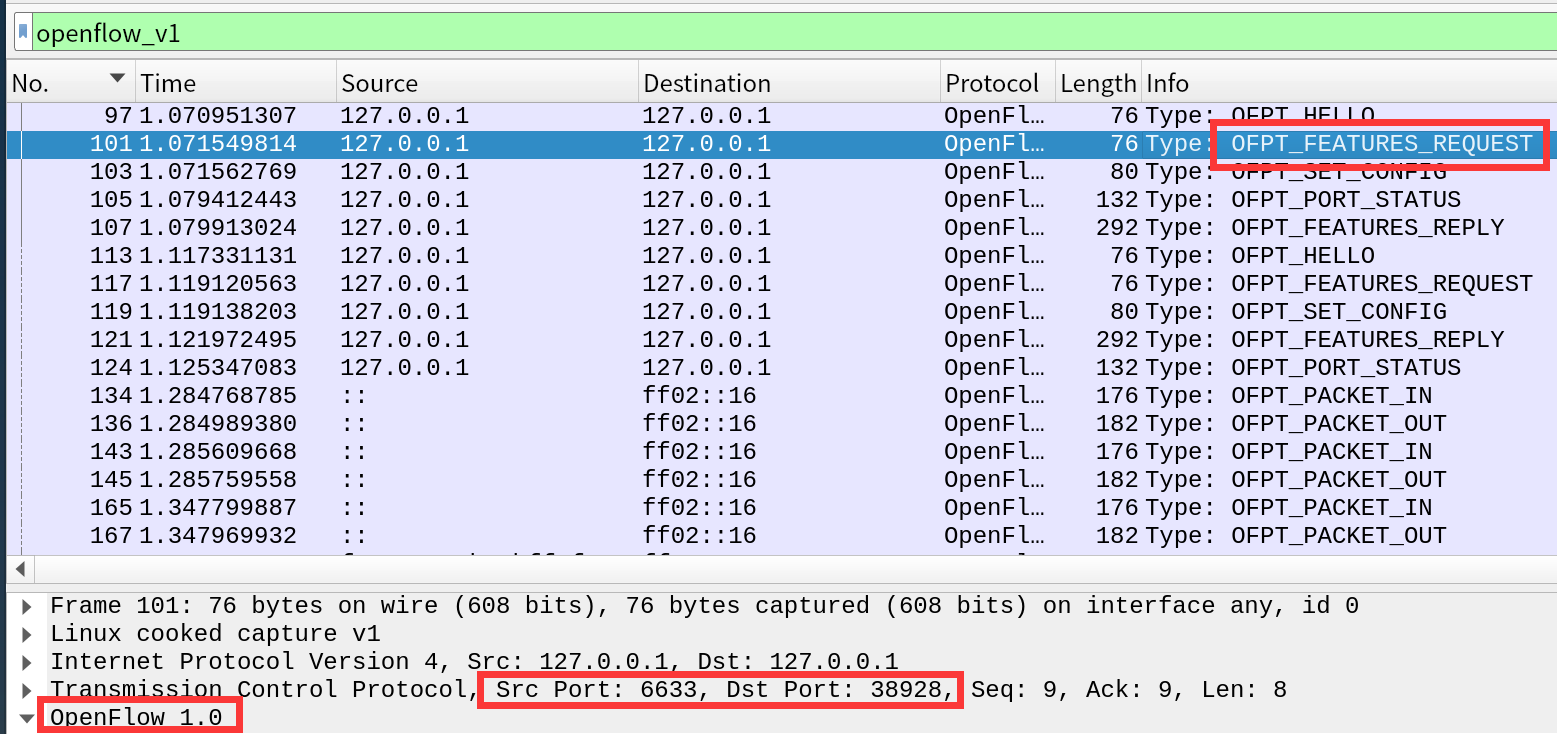
控制器请求交换器的特征信息
-
OFPT_SET_CONFIG 控制器6633端口(请按照我给你的flag和max bytes of packet进行配置) ---> 交换机38928端口
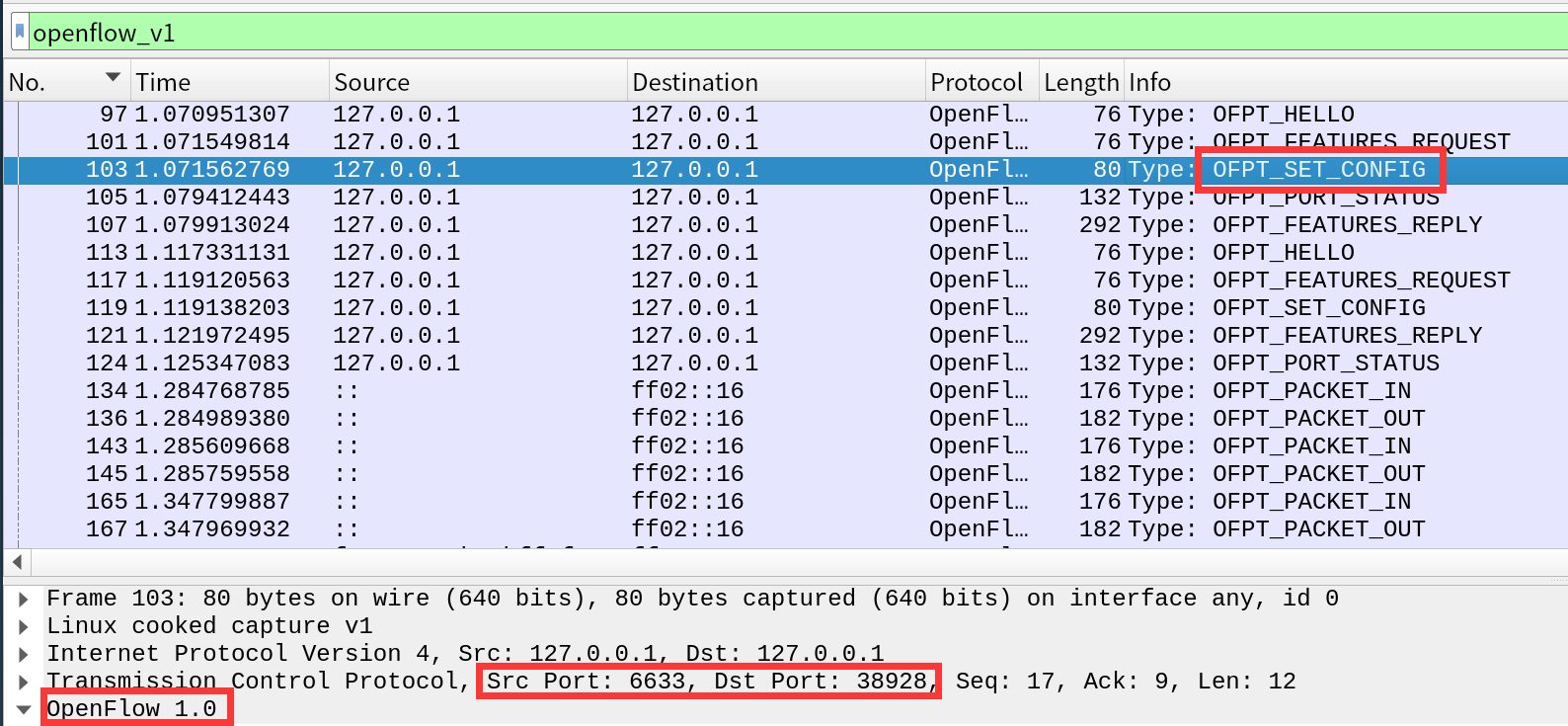
控制器要求交换机按照所给出的信息进行配置
-
OFPT_PORT_STATUS 源端口38928 -> 目的端口6633,从交换机到控制器
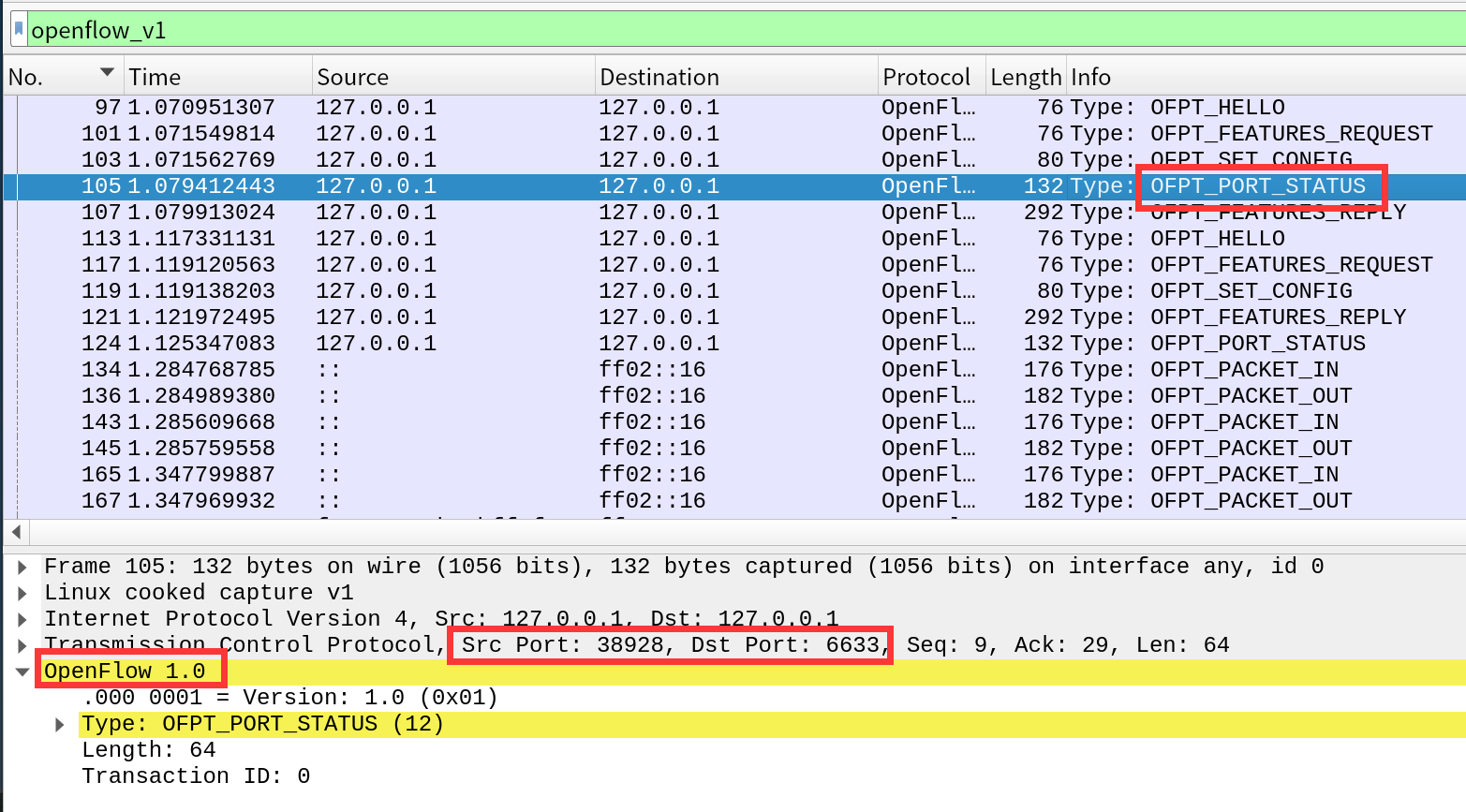
当交换机端口发生变化时,告知控制器相应的端口状态。
-
OFPT_FEATURES_REPLY 交换机38928端口(这是我的特征信息,请查收) ---> 控制器6633端口
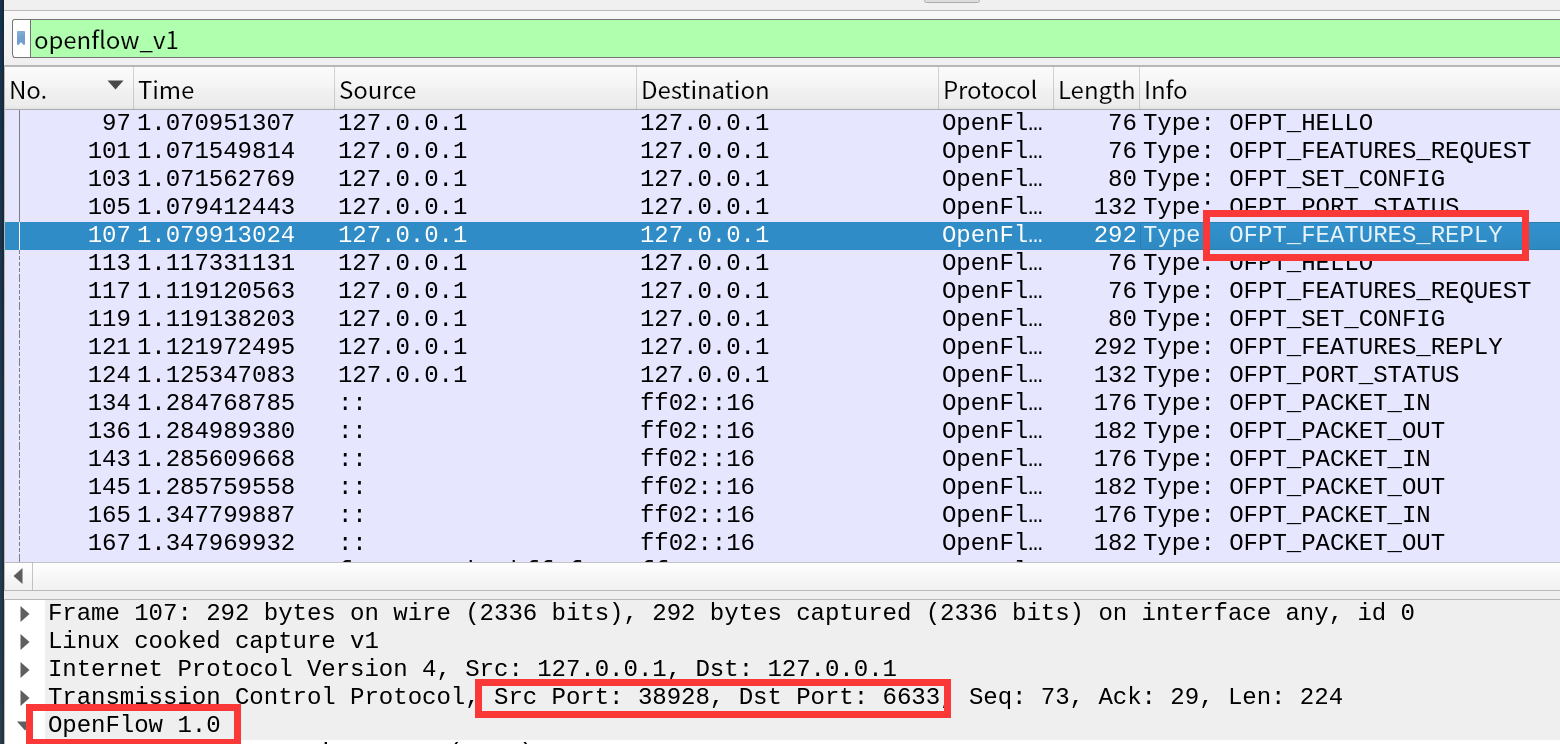
交换机告知控制器它的特征信息
-
OFPT_PACKET_IN 交换机38928端口(有数据包进来,请指示)--->控制器6633端口
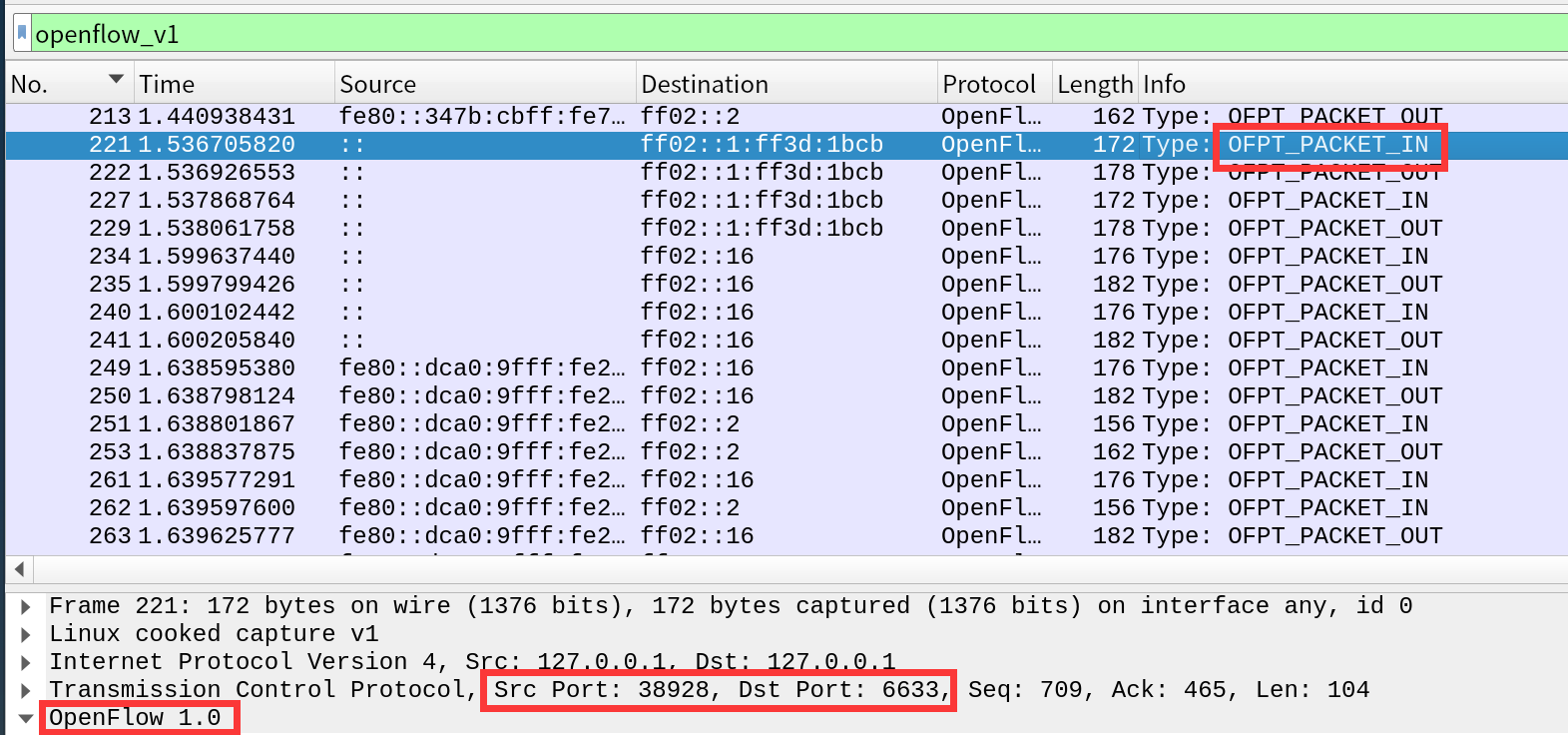
交换机告知控制器有数据包进来,请求控制器指示
-
OFPT_PACKET_OUT 控制器6633端口--->交换机38928端口(请按照我给你的action进行处理)
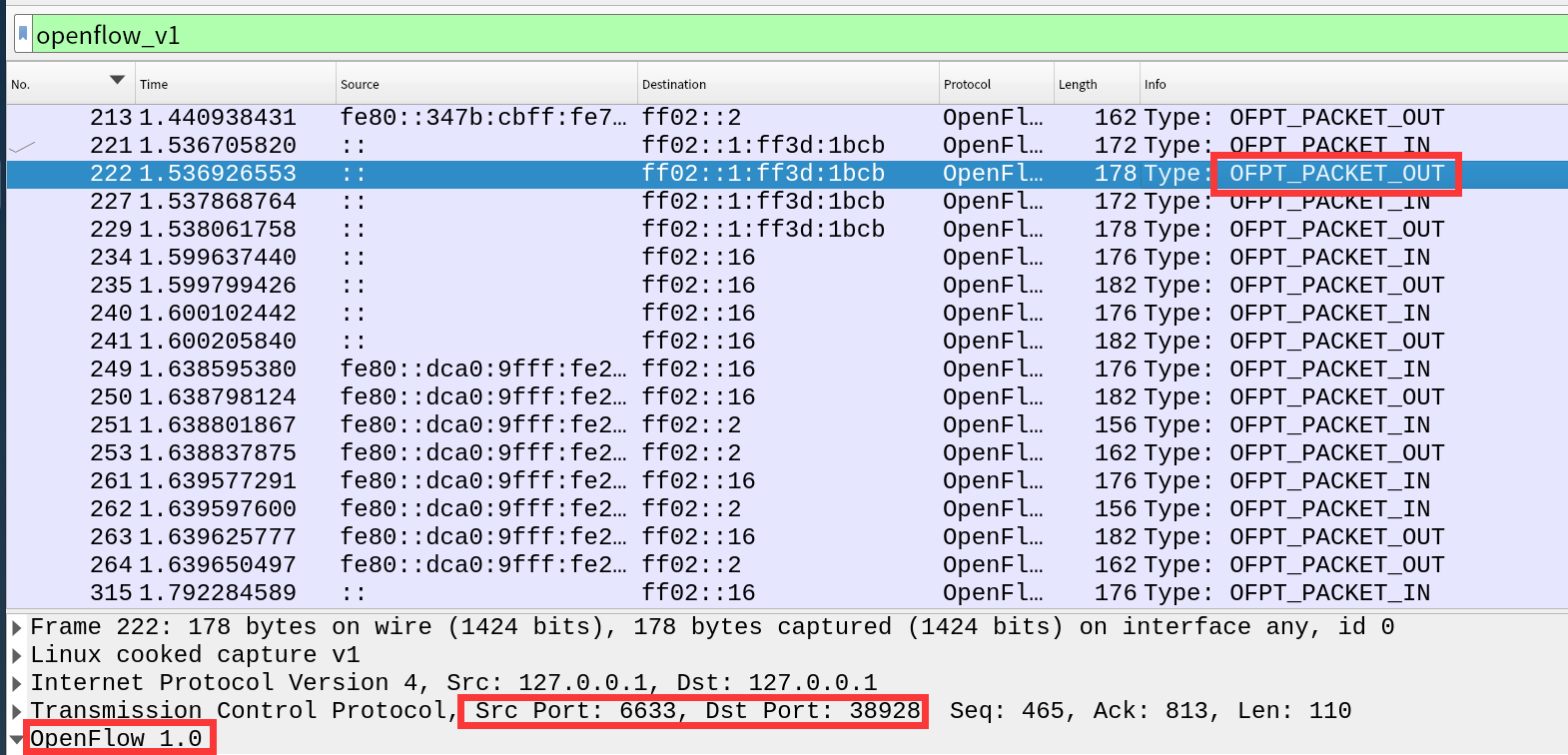
控制器要求交换机按照所给出的action进行处理
-
OFPT_FLOW_MOD 分析抓取的flow_mod数据包,控制器通过6633端口向交换机38928端口、交换机38932端口下发流表项,指导数据的转发处理
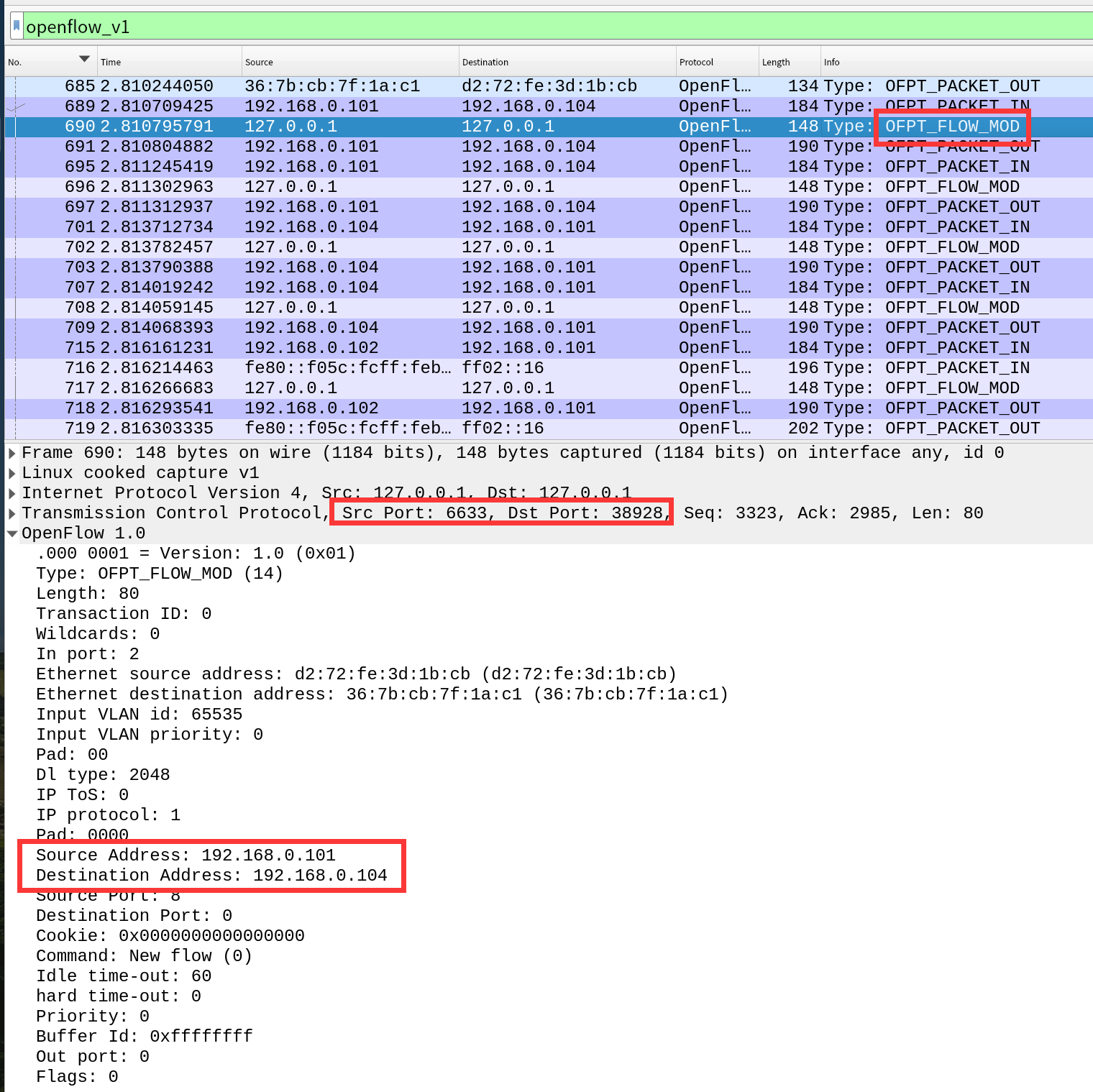

3.画出相关交互图或流程图:
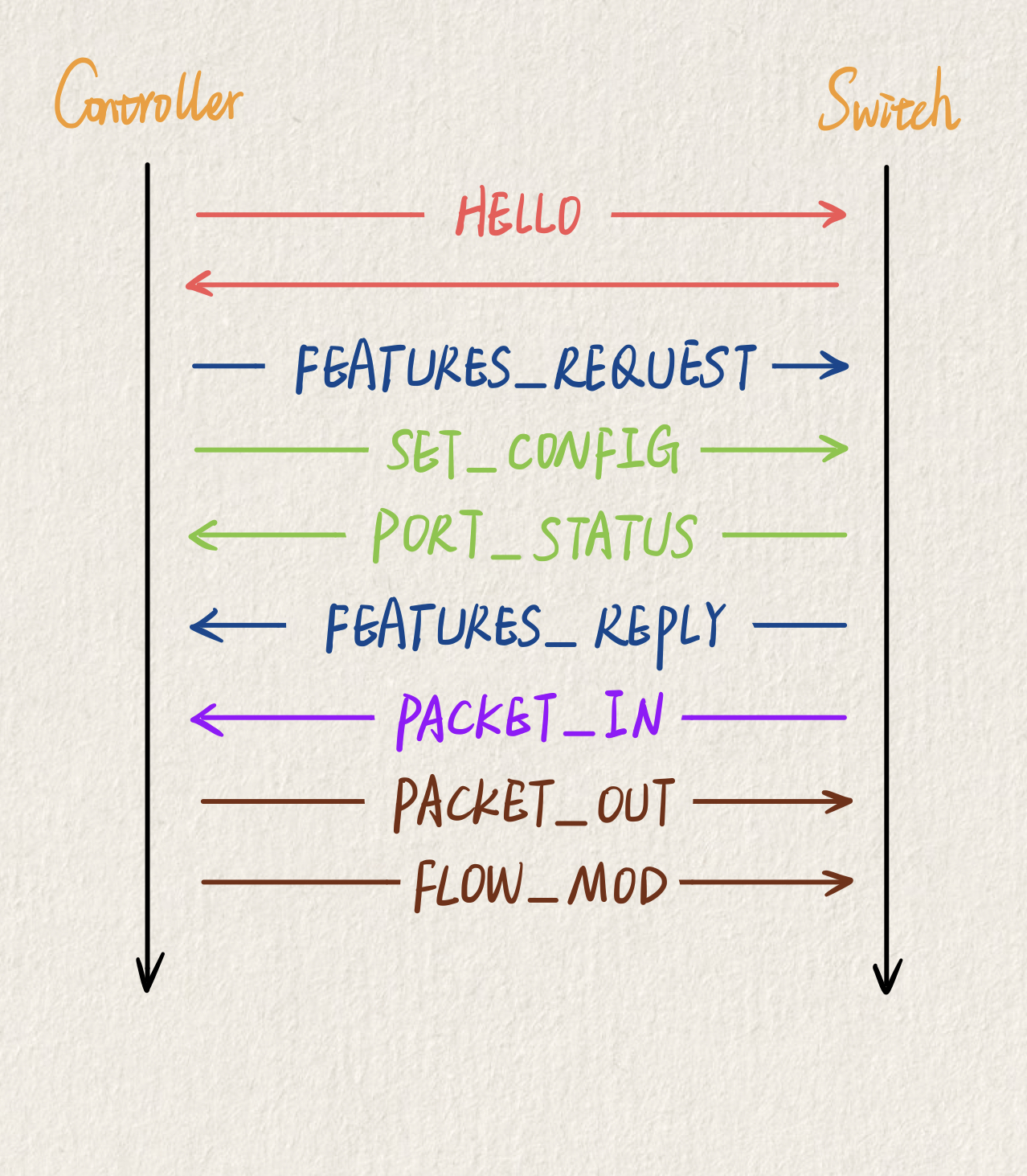
7.回答问题:交换机与控制器建立通信时是使用TCP协议还是UDP协议?
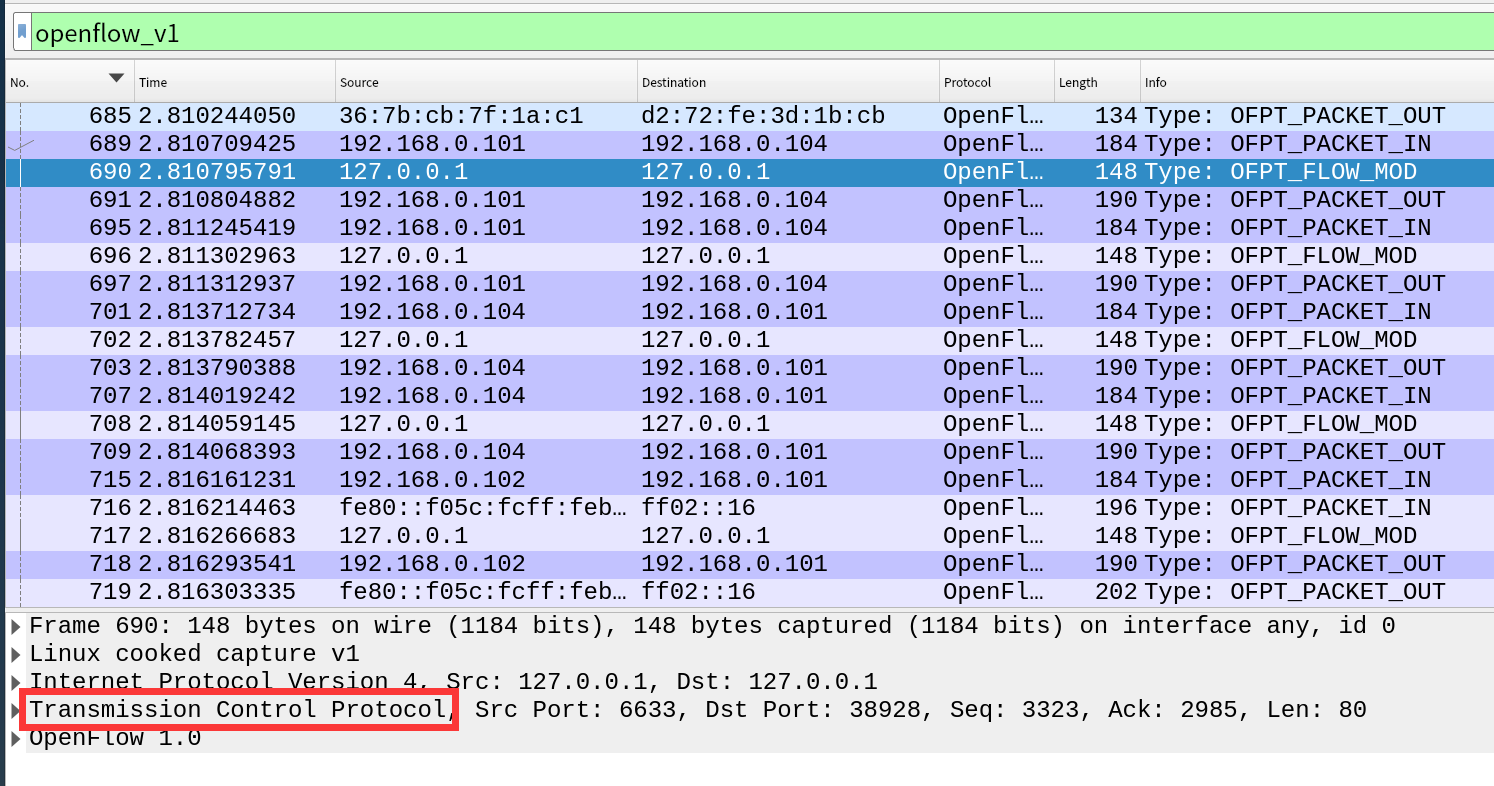
如图所示为(Transmission Control Protocol)TCP协议。
(二)进阶要求
将抓包基础要求第2步的抓包结果对照OpenFlow源码,了解OpenFlow主 要消息类型对应的数据结构定义。
1. HELLO
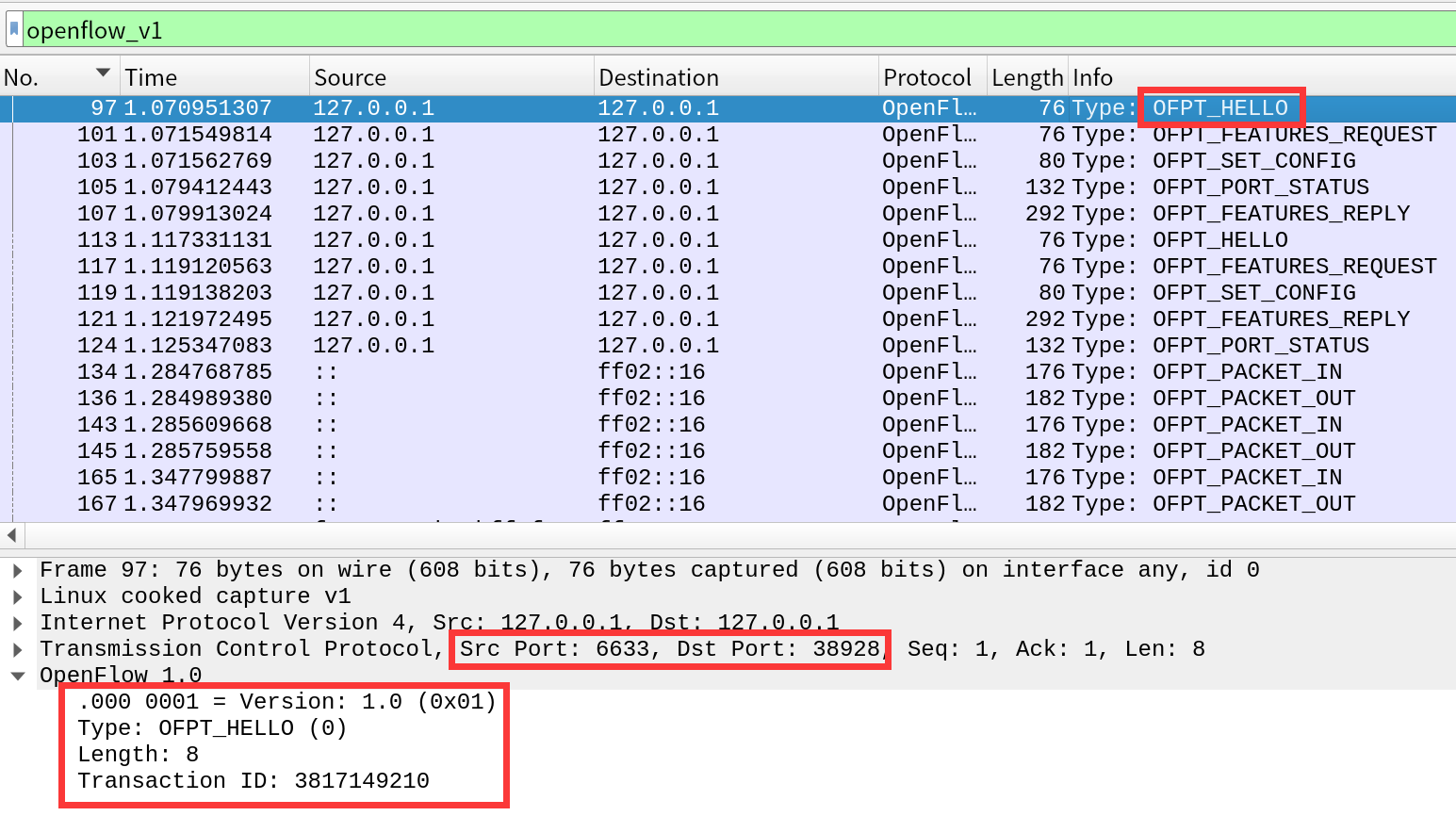
struct ofp_header {
uint8_t version; /* OFP_VERSION. */
uint8_t type; /* One of the OFPT_ constants. */
uint16_t length; /* Length including this ofp_header. */
uint32_t xid; /* Transaction id associated with this packet.
Replies use the same id as was in the request
to facilitate pairing. */
};
struct ofp_hello {
struct ofp_header header;
};
可以看到对应了HELLO报文的四个参数
2. FEATURES_REQUEST
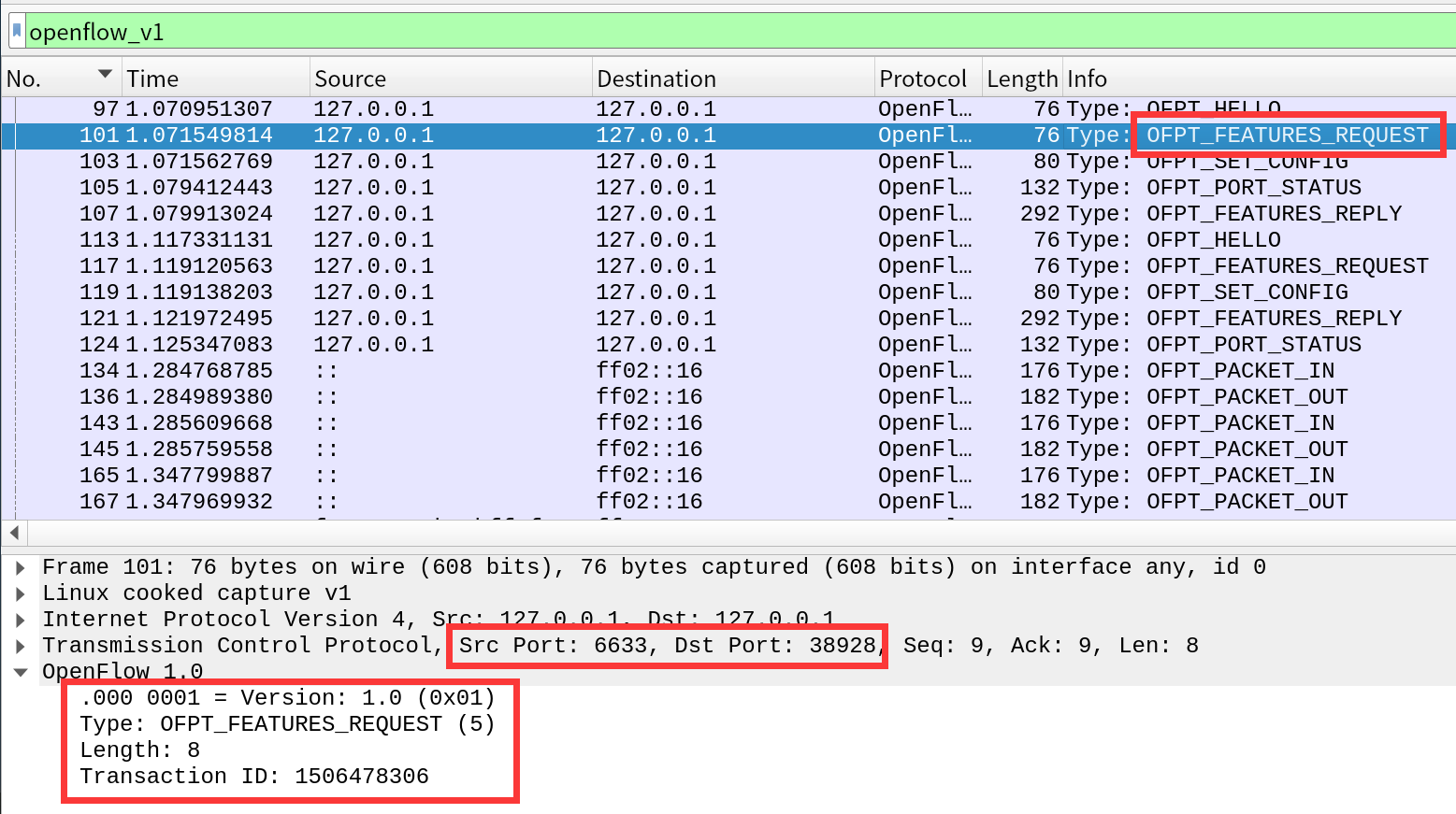
源码参数格式与HELLO相同,与上述ofp_header结构体中数据相同
3.SET_CONFIG

控制器下发的交换机配置数据结构体
/* Switch configuration. */
struct ofp_switch_config {
struct ofp_header header;
uint16_t flags; /* OFPC_* flags. */
uint16_t miss_send_len; /* Max bytes of new flow that datapath should
send to the controller. */
};
4. PORT_STATUS

/* A physical port has changed in the datapath */
struct ofp_port_status {
struct ofp_header header;
uint8_t reason; /* One of OFPPR_*. */
uint8_t pad[7]; /* Align to 64-bits. */
struct ofp_phy_port desc;
};
5. FEATURES_REPLY
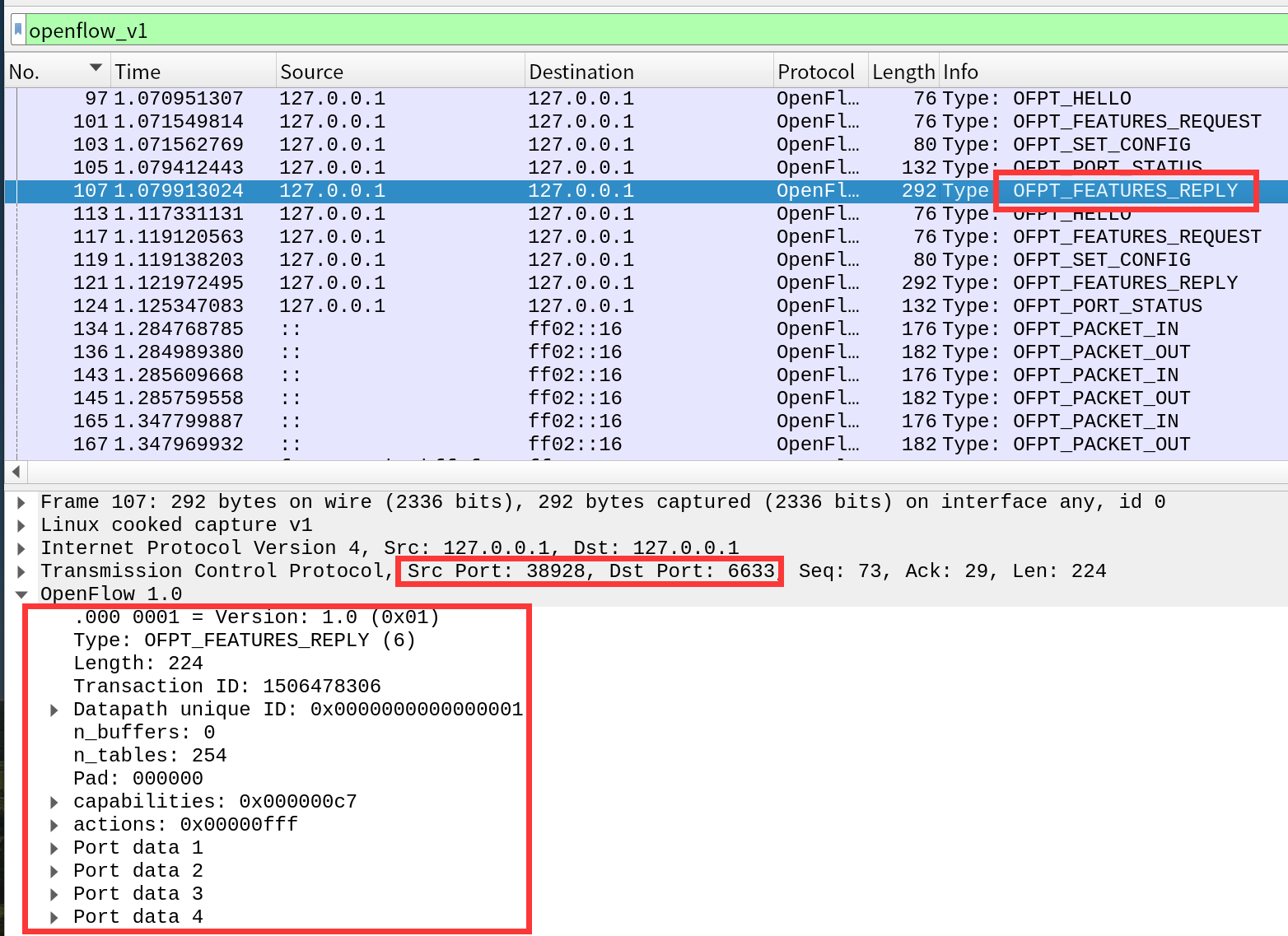
struct ofp_switch_features {
struct ofp_header header;
uint64_t datapath_id; /* Datapath unique ID. The lower 48-bits are for
a MAC address, while the upper 16-bits are
implementer-defined. */
uint32_t n_buffers; /* Max packets buffered at once. */
uint8_t n_tables; /* Number of tables supported by datapath. */
uint8_t pad[3]; /* Align to 64-bits. */
/* Features. */
uint32_t capabilities; /* Bitmap of support "ofp_capabilities". */
uint32_t actions; /* Bitmap of supported "ofp_action_type"s. */
/* Port info.*/
struct ofp_phy_port ports[0]; /* Port definitions. The number of ports
is inferred from the length field in
the header. */
};
/* Description of a physical port */
struct ofp_phy_port {
uint16_t port_no;
uint8_t hw_addr[OFP_ETH_ALEN];
char name[OFP_MAX_PORT_NAME_LEN]; /* Null-terminated */
uint32_t config; /* Bitmap of OFPPC_* flags. */
uint32_t state; /* Bitmap of OFPPS_* flags. */
/* Bitmaps of OFPPF_* that describe features. All bits zeroed if
* unsupported or unavailable. */
uint32_t curr; /* Current features. */
uint32_t advertised; /* Features being advertised by the port. */
uint32_t supported; /* Features supported by the port. */
uint32_t peer; /* Features advertised by peer. */
};
可以看到与图中信息一一对应,包括交换机物理端口的信息
6. PACKET_IN
PACKET_IN有两种情况:
- 交换机查找流表,发现没有匹配条目,但是这种包没有抓到过
enum ofp_packet_in_reason {
OFPR_NO_MATCH, /* No matching flow. */
OFPR_ACTION /* Action explicitly output to controller. */
};
- 有匹配条目,对应的action是OUTPUT=CONTROLLER,固定收到向控制器发送包
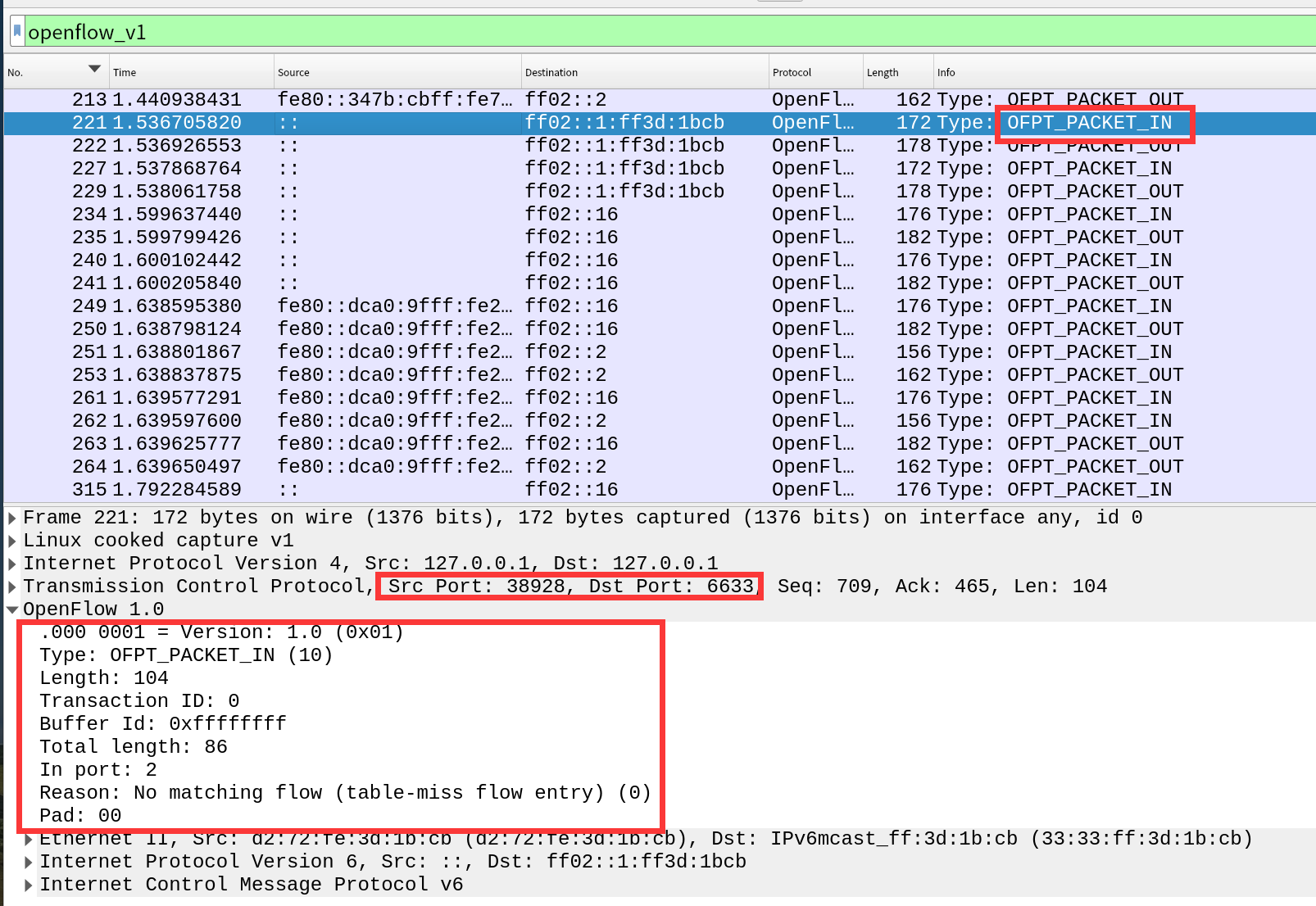
struct ofp_packet_in {
struct ofp_header header;
uint32_t buffer_id; /* ID assigned by datapath. */
uint16_t total_len; /* Full length of frame. */
uint16_t in_port; /* Port on which frame was received. */
uint8_t reason; /* Reason packet is being sent (one of OFPR_*) */
uint8_t pad;
uint8_t data[0]; /* Ethernet frame, halfway through 32-bit word,
so the IP header is 32-bit aligned. The
amount of data is inferred from the length
field in the header. Because of padding,
offsetof(struct ofp_packet_in, data) ==
sizeof(struct ofp_packet_in) - 2. */
};
7. PACKET_OUT
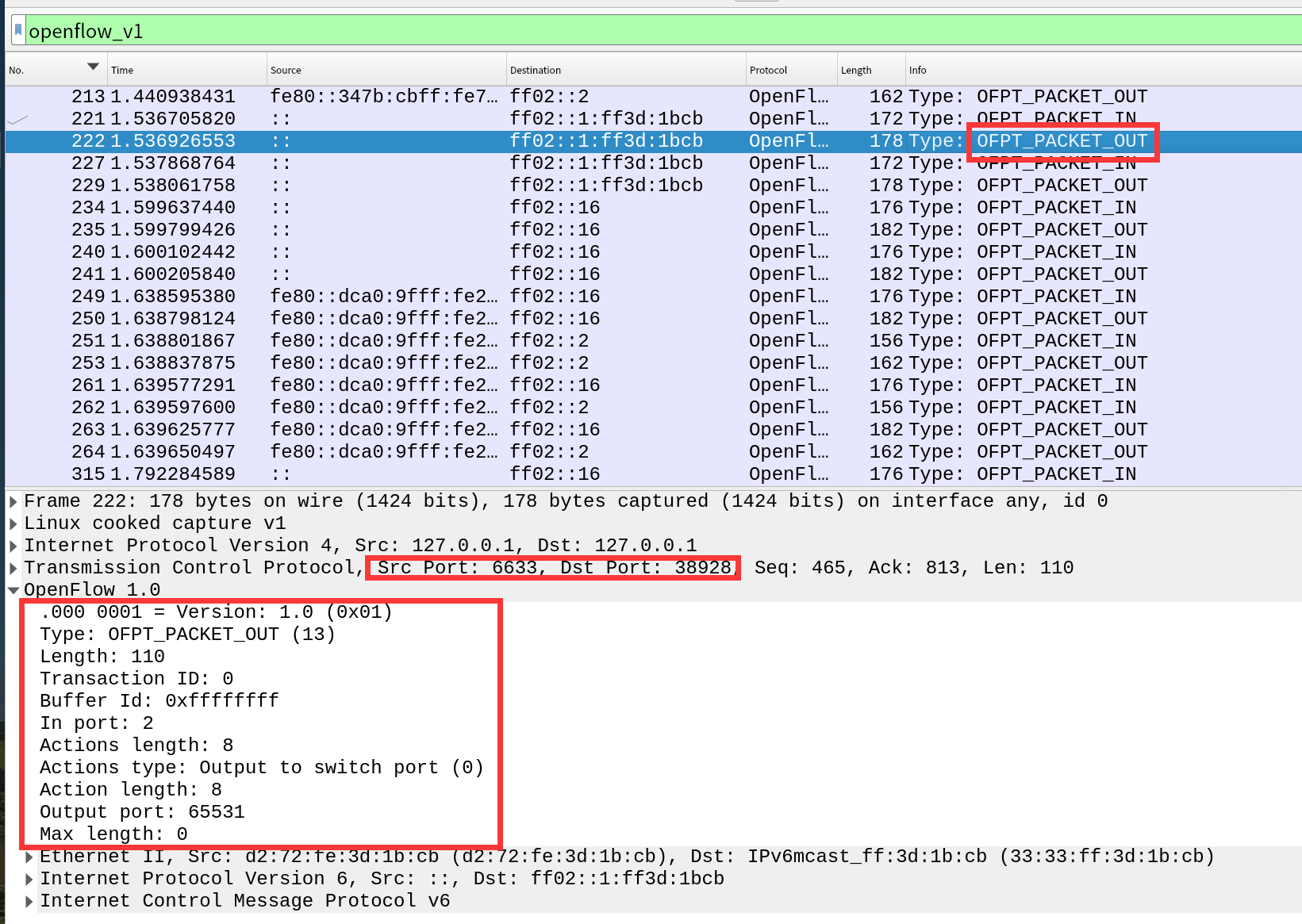
struct ofp_packet_out {
struct ofp_header header;
uint32_t buffer_id; /* ID assigned by datapath (-1 if none). */
uint16_t in_port; /* Packet's input port (OFPP_NONE if none). */
uint16_t actions_len; /* Size of action array in bytes. */
struct ofp_action_header actions[0]; /* Actions. */
/* uint8_t data[0]; */ /* Packet data. The length is inferred
from the length field in the header.
(Only meaningful if buffer_id == -1.) */
};
8. FLOW_MOD
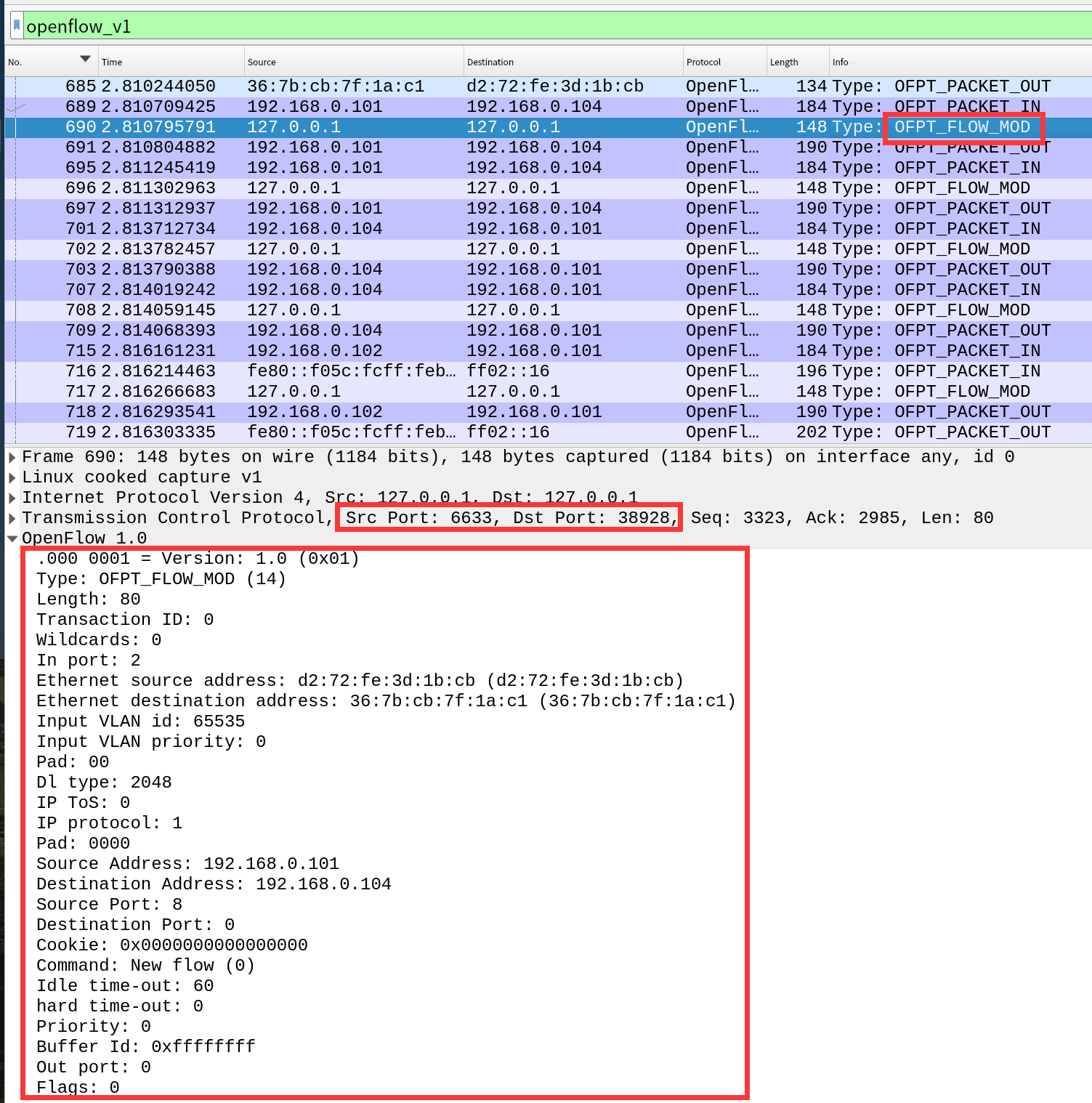
struct ofp_flow_mod {
struct ofp_header header;
struct ofp_match match; /* Fields to match */
uint64_t cookie; /* Opaque controller-issued identifier. */
/* Flow actions. */
uint16_t command; /* One of OFPFC_*. */
uint16_t idle_timeout; /* Idle time before discarding (seconds). */
uint16_t hard_timeout; /* Max time before discarding (seconds). */
uint16_t priority; /* Priority level of flow entry. */
uint32_t buffer_id; /* Buffered packet to apply to (or -1).
Not meaningful for OFPFC_DELETE*. */
uint16_t out_port; /* For OFPFC_DELETE* commands, require
matching entries to include this as an
output port. A value of OFPP_NONE
indicates no restriction. */
uint16_t flags; /* One of OFPFF_*. */
struct ofp_action_header actions[0]; /* The action length is inferred
from the length field in the
header. */
};
struct ofp_action_header {
uint16_t type; /* One of OFPAT_*. */
uint16_t len; /* Length of action, including this
header. This is the length of action,
including any padding to make it
64-bit aligned. */
uint8_t pad[4];
};
(三)实验总结
本次实验较为简单,先构建拓扑,然后保存为python文件,接着用 wireshark 抓包分析结果即可。但还是遇到了个比较蠢的问题,由于执行 sudo python 032002415.py 命令后未执行 pingall 命令导致 FLOW_MOD 包无法找到,导致得重新截图,浪费了较多的时间。通过本次实验,我能够熟练地运用 wireshark 对 OpenFlow 协议数据交互过程进行抓包,学会在过滤器输入 "openflow_v1" 或 "openflow_v6" 对数据包进行过滤,对 OpenFlow 协议的数据包交互过程与机制有了更深入的了解。同时,通过对抓包结果和 OpenFlow 源码的比较,了解了 OpenFlow 主要消息类型对应的数据结构定义。



